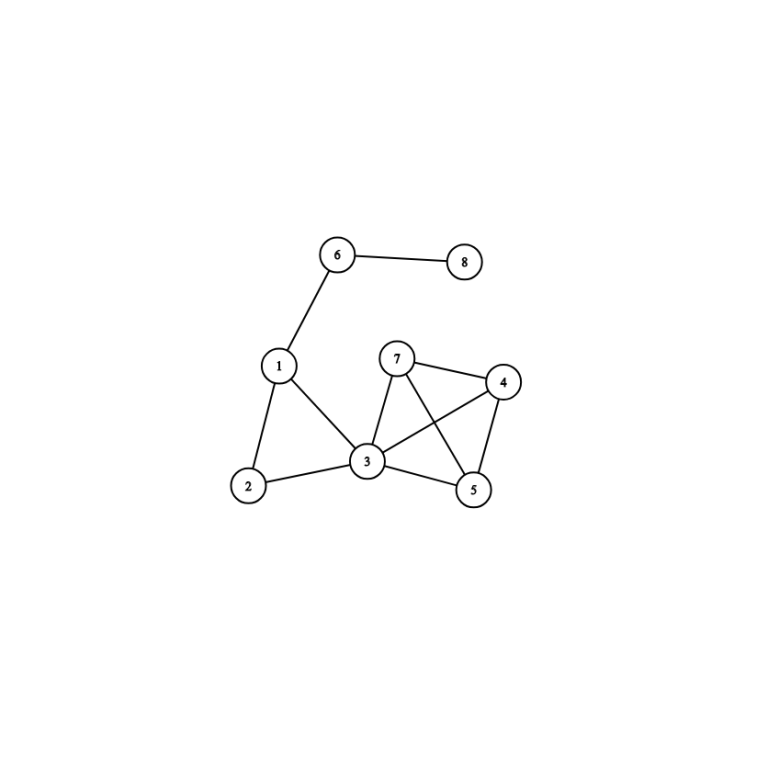CodeForces - 1046B Hyperspace Highways (廣義圓方樹)
B. Hyperspace Highways
time limit per test
1 second
memory limit per test
256 megabytes
input
standard input
output
standard output
In an unspecified solar system, there are NN planets. A space government company has recently hired space contractors to build MMbidirectional Hyperspace™ highways, each connecting two different planets. The primary objective, which was to make sure that every planet can be reached from any other planet taking only Hyperspace™ highways, has been completely fulfilled. Unfortunately, lots of space contractors had friends and cousins in the Space Board of Directors of the company, so the company decided to do much more than just connecting all planets.
In order to make spending enormous amounts of space money for Hyperspace™ highways look neccessary, they decided to enforce a strict rule on the Hyperspace™ highway network: whenever there is a way to travel through some planets and return to the starting point without travelling through any planet twice, every pair of planets on the itinerary should be directly connected by a Hyperspace™ highway. In other words, the set of planets in every simple cycle induces a complete subgraph.
You are designing a Hyperspace™ navigational app, and the key technical problem you are facing is finding the minimal number of Hyperspace™ highways one needs to use to travel from planet AA to planet BB. As this problem is too easy for Bubble Cup, here is a harder task: your program needs to do it for QQ pairs of planets.
Input
The first line contains three positive integers NN (1≤N≤1000001≤N≤100000), MM (1≤M≤5000001≤M≤500000) and QQ (1≤Q≤2000001≤Q≤200000), denoting the number of planets, the number of Hyperspace™ highways, and the number of queries, respectively.
Each of the following M lines contains a highway: highway ii is given by two integers uiui and vivi (1≤ui<vi≤N1≤ui<vi≤N), meaning the planets uiui and vivi are connected by a Hyperspace™ highway. It is guaranteed that the network of planets and Hyperspace™ highways forms a simple connected graph.
Each of the following QQ lines contains a query: query jj is given by two integers ajaj and bjbj (1≤aj<bj≤N)(1≤aj<bj≤N), meaning we are interested in the minimal number of Hyperspace™ highways one needs to take to travel from planet ajaj to planet bjbj.
Output
Output QQ lines: the jj-th line of output should contain the minimal number of Hyperspace™ highways one needs to take to travel from planet ajaj to planet bjbj.
Examples
input
Copy
5 7 2 1 2 1 3 1 4 2 3 2 4 3 4 1 5 1 4 2 5
output
Copy
1 2
input
Copy
8 11 4 1 2 2 3 3 4 4 5 1 3 1 6 3 5 3 7 4 7 5 7 6 8 1 5 2 4 6 7 3 8
output
Copy
2 2 3 3
Note
The graph from the second sample:
題意:給你一個特殊的圖,查詢最短距離。
解題思路:根據官方題解,對原圖建立廣義圓方樹,然後就樹上路徑除二就是答案。模板+1
#include<bits/stdc++.h>
using namespace std;
typedef long long ll;
const int MAXN=500000;
const int MAXLOGV=20;
struct edge{
int u,v,next;
}e[MAXN*4],e1[MAXN*4];
int head1[MAXN],edge_num1;//原圖
int head[MAXN],edge_num;//圓方樹
void insert_edge(int u,int v){
e1[edge_num1].u=u;
e1[edge_num1].v=v;
e1[edge_num1].next=head1[u];
head1[u]=edge_num1++;
}
void insert_edge2(int u,int v){
e[edge_num].u=u;
e[edge_num].v=v;
e[edge_num].next=head[u];
head[u]=edge_num++;
}
int N,M,Q;
/****根據原圖建立圓方樹****/
int st[MAXN];
int low[MAXN];
int dfn[MAXN];
int n1;
void tarjan(int k,int fa)
{
st[++st[0]]=k;
low[k]=dfn[k]=++dfn[0];
for(int i=head1[k];~i;i=e1[i].next)
{
int p=e1[i].v;
if(p!=fa)
{
if(!dfn[p])
{
tarjan(p,k);
if(low[p]>=dfn[k])//棧中p所在的部分與k構成了一個點雙
//當low[p]>dfn[k]時,這個點雙只有一條邊兩個點。
{
insert_edge2(++n1,k);
insert_edge2(k,n1);//新建方點n1,並向所有點雙中的點連邊
while(st[st[0]]!=p){
insert_edge2(n1,st[st[0]]);
insert_edge2(st[st[0]],n1);
st[st[0]--]=0;
}
insert_edge2(n1,p);
insert_edge2(p,n1);
st[st[0]--]=0;
}
else low[k]=min(low[k],low[p]);
}
else low[k]=min(low[k],dfn[p]);
}
}
}
/***LCA處理***/
int f[MAXLOGV+2][MAXN];
int dep[MAXN];
void dfs(int u,int fa)
{
f[0][u]=fa;
dep[u]=dep[fa]+1;
for(int i=head[u];~i;i=e[i].next){
int v=e[i].v;
if(v==fa)
continue;
dfs(v,u);
}
}
void lca_init(){
memset(f,0,sizeof(f));
dep[0]=0;
dfs(1,1);
for(int k=0;k+1<MAXLOGV;++k){
for(int v=1;v<=n1;++v){
f[k+1][v]=f[k][f[k][v]];
}
}
}
int LCA(int u,int v)
{
if(dep[u]>dep[v]) swap(u,v);
for(int k=0;k<MAXLOGV;++k){
if( (dep[v]-dep[u])>>k&1){
v=f[k][v];
}
}
if(u==v) return u;
for(int k=MAXLOGV-1;k>=0;--k){
if(f[k][u]!=f[k][v]){
u=f[k][u];
v=f[k][v];
}
}
return f[0][u];
}
int main()
{
memset(head,-1,sizeof(head));
edge_num=0;
memset(head1,-1,sizeof(head1));
edge_num1=0;
scanf("%d%d%d",&N,&M,&Q);
n1=N;
int u,v;
for(int i=0;i<M;i++){
scanf("%d%d",&u,&v);
insert_edge(u,v);
insert_edge(v,u);
}
tarjan(1,0);
lca_init();
while(Q--){
scanf("%d%d",&u,&v);
printf("%d\n",(dep[u]+dep[v]-2*dep[LCA(u,v)])/2);
}
return 0;
}
